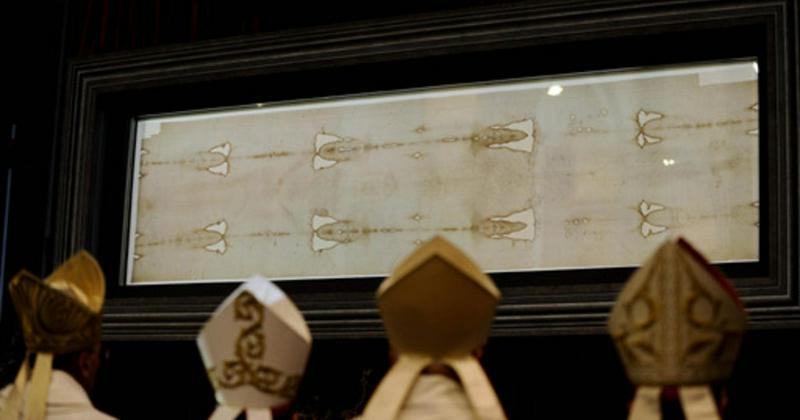The Shroud Of Turin, Jesus Of Nazareth's Negative Image On The Burial Shroud: Myths Debunked
By | September 21, 2020

The Shroud of Turin, a 14-foot length of ancient linen that bears the image of a bearded man, is either a sacred relic from Biblical times or an elaborate medieval hoax, depending on who you ask. If it truly is the burial cloth of Jesus Christ, as many believe, it's one of the most important relics of the Catholic Church; if it's fake, it still demonstrates a remarkable level of artistry and understanding of anatomy. Let's unravel the Shroud of Turin.

The Shroud Of Turin
The Shroud of Turin is no ordinary blankie. Not only has it somehow been imprinted with the face and body of a man, the image of that man's body appears to display injuries consistent with crucifixion. It's also a reverse image, like a photographic negative, somehow created long before the invention of photography. In 1898, an Italian photographer named Secondo Pia became the first person allowed to take a photograph of the Shroud of Turin, and when he developed the film in his darkroom, he was astonished to see the faint markings reverse their colors and the clear image of a face materialize on his negatives.
To the Catholic Church, it confirmed something they'd long believed: that the image of Jesus was miraculously burned into the fabric of his burial shroud. Although there was no written record of any such shroud for hundreds of years after Jesus's death and the first confirmed documentation of its existence is a 1390 letter from Biship Pierre d'Arcis to Pope Clement VII declaring the shroud a fake, there was no dissuading certain true believers. In 1506, Pope Julius II announced that the Shroud of Turin was an authentic religious relic that should be venerated. In 1532, after the shroud was almost destroyed when the French chapel where it was stored caught fire, a group of nuns sewed patches over the burn marks. Shortly thereafter, it was moved to the Cathedral of Turin in northern Italy, from which it gets its name.
By the 20th century, it was an accepted truth within the Catholic Church that the shroud was authentic. Pope Pius XII referred to the cloth as "a holy thing perhaps like nothing else," Pope John Paul II called it a "distinguished relic," and Pope Benedict XVI and Pope Francis have both issued statements that seem to indicate their support.

Is The Shroud Of Turin Real?
It seems easy, on its face (no pun intended), to dismiss the Shroud of Turin as some marks on a rag that anyone could have made with the ancient version of a Sharpie, but it's actually easier to explain as an authentic relic. After all, miracles aren't bound by the laws of physics. If it's a hoax, how was the image formed? If it was created like a photo negative, it would have had to be coated with a photosensitive substance and treated with a bright flash of light to fuse the image onto the cloth, which would have made it the first photograph by a number of centuries. Was it perhaps some unknown chemical process? A release of radioactive energy?
Adding to the mystery of the Shroud of Turin were the results of radiocarbon dating on the fabric in 1988. The testing dated the shroud to the Middle Ages, not the Biblical era, but critics claim the test was flawed because it was done on fabric used to repair the cloth after the fire. Others claim that the fabric had been chemically preserved and those substances skewed the results. Another test, conducted in 2013 using a non-standard measurement of the absorption of light at different colors, dated the fabric to the fourth or fifth century C.E., increasing the possibility that it is authentic.

Theories About The Shroud Of Turin
The most popular theory held by skeptics of the Shroud of Turin is that the image is a painting by a medieval hoaxer, but even this theory is controversial. For starters, scientists haven't identified any paint or pigments that might have been used. There are no visible brush strokes and, weirdly, the color doesn't stop at the top layer of the linen; it seems to be infused through all the fibers of the cloth. Then there are questions about the image itself: How and why it was rendered in a negative form before the invention of photography gave us the knowledge of negative images? Lastly, from what we know of it, the image on the shroud is an accurate depiction of Jesus’s crucified body. In fact, it's more scientifically plausible than most artistic renderings of Jesus on the cross. They tend to portray Jesus hung from the cross by nails through his hands, but later historians concluded that people of the time were probably hung by their wrists because nails through the hands wouldn't have held. The body represented on the Shroud of Turin shows wounds at the wrists.

